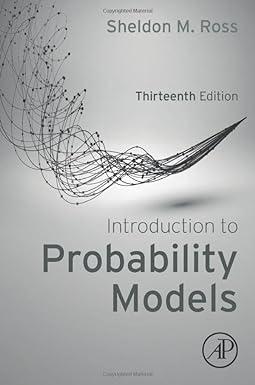Suppose that independent trials, each of which is equally likely to have any of m possible outcomes,
Question:
Suppose that independent trials, each of which is equally likely to have any of m possible outcomes, are performed until the same outcome occurs k consecutive times. If N denotes the number of trials, show that
Some people believe that the successive digits in the expansion of π = 3.14159 . . . are “uniformly” distributed. That is, they believe that these digits have all the appearance of being independent choices from a distribution that is equally likely to be any of the digits from 0 through 9. Possible evidence against this hypothesis is the fact that starting with the 24,658,601st digit there is a run of nine successive 7s. Is this information consistent with the hypothesis of a uniform distribution?
To answer this, we note from the preceding that if the uniform hypothesis were correct, then the expected number of digits until a run of nine of the same value occurs is![]()
Thus, the actual value of approximately 25 million is roughly 22 percent of the theoretical mean. However, it can be shown that under the uniformity assumption the standard deviation of N will be approximately equal to the mean. As a result, the observed value is approximately 0.78 standard deviations less than its theoretical mean and is thus quite consistent with the uniformity assumption.
Step by Step Answer:







